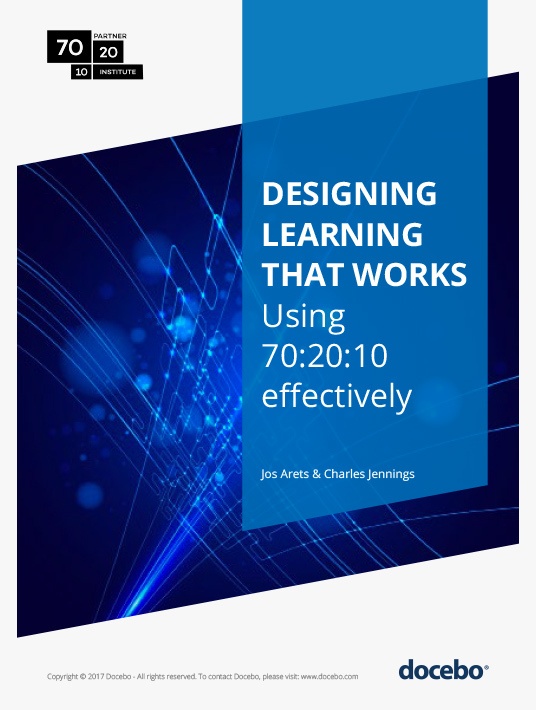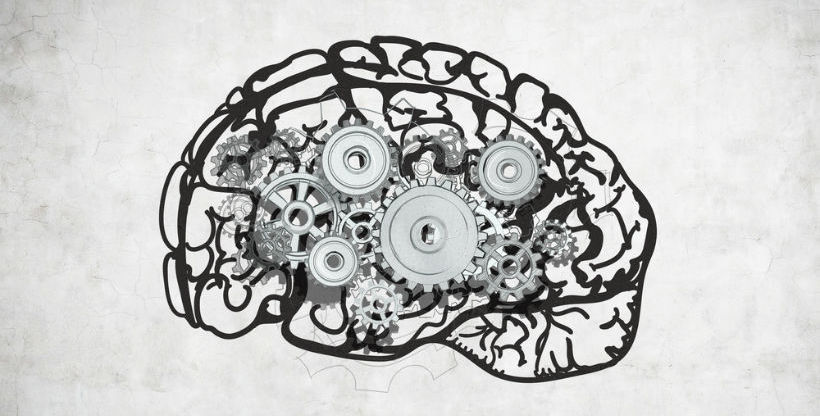Designing Learning That Works: Using 70:20:10 Effectively
Is 70:20:10 simply “old wine in new bottles”, given that most Learning and Development (L&D) professionals think they already combine learning and work? Some ask “why bother with 70:20:10 at all?” or “What is it with this neat formula – 70, 20, 10?”. People are suspicious of nice round numbers: Surely the reality of learning and performing is much too complex to be described in terms of simple ratios, right?

Despite all these criticisms, there’s a worldwide movement of Learning and Development professionals who realize and acknowledge the value of 70:20:10. In the eBook Designing Learning That Works: Using 70:20:10 Effectively you will learn that the 70:20:10 model is not a mantra, an ideology, or an end in itself, but a way to connect L&D departments more quickly and effectively to what really matters: Learning and performing at the speed of business.
Learning and Development’s work isn’t just about providing formal learning solutions. By using 70:20:10 as a reference model, more and more L&D professionals are co-creating solutions with their business colleagues. This “movement” and new way of working with 70:20:10 makes L&D more relevant to their organizations.
About The eBook: Can 70:20:10 Support Performance?
When examining the potential of 70:20:10, the starting point for our thinking should be the question:
“Is it possible to improve the performance of people and organizations by using this reference model?”
On the first view, this may not seem an original question. People have been trying for decades to measure the return and business impact of various L&D approaches. However, we know that a positive return and business impact will never be achieved simply by offering a catalog of formal training and eLearning solutions, so it makes sense to think about other ways in which L&D can add value for organizations.
The eBook Designing Learning That Works: Using 70:20:10 Effectively argues this is possible by using 70:20:10 as a framework for action, and by designing an optimal mix of formal and informal solutions align with this model. Specifically, in the eBook you will read about:
- The 70:20:10 Framework.
Many organizations question the effectiveness of the 70:20:10 learning methodology. Learn what is required for effective 70:20:10 implementation. - New Roles: Aligning With The Business And Organization Strategy.
Learn about the roles required to support 70:20:10 implementation. - About The 70:20:10 Institute.
The 70:20:10 Institute has been established in response to widespread international demand for information about what the 70:20:10 model involves and how it can be used.
70:20:10 requires a change in mindset for Learning and Development. Instead of relying solely on learning to achieve business results, it shifts the emphasis towards performing for business results. It highlights the original purpose of the HR and L&D professions, which is to help people and organizations to do their jobs better. For more on how this change can happen, download Designing Learning That Works: Using 70:20:10 Effectively now.
Related Articles:
- 70:20:10 Model – Part I: Framework And The Role Of The Performance Detective
- 70:20:10 Model – Part II: Framework And The Role Of The Performance Architect
- 70:20:10 Model – Part III: Framework And The Role Of The Performance Master Builder









